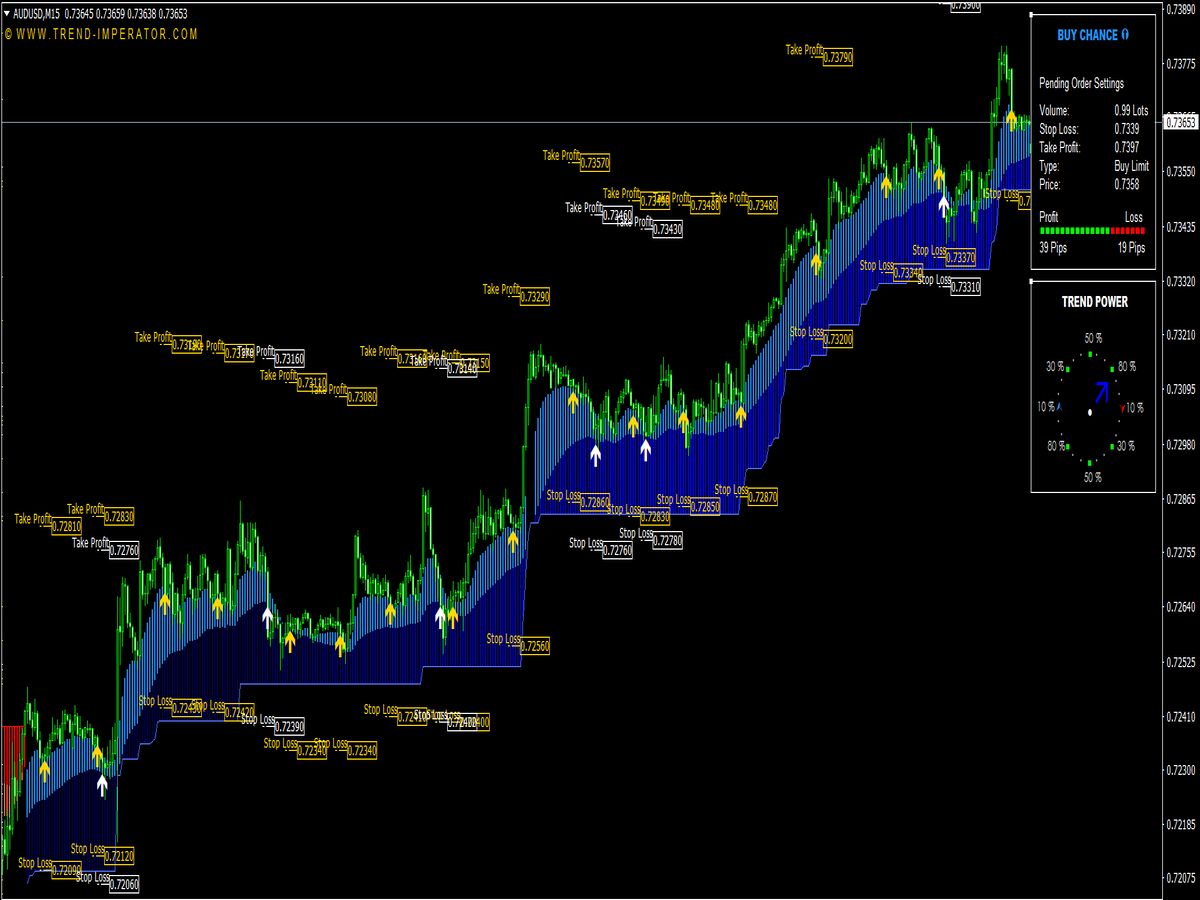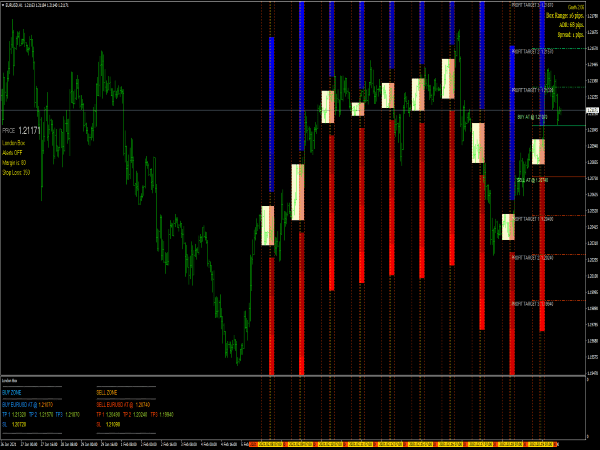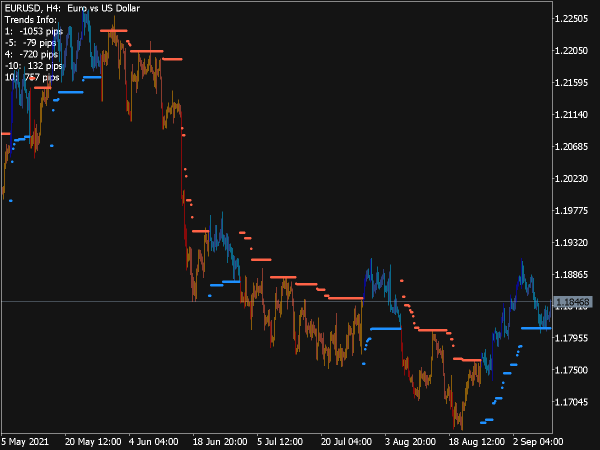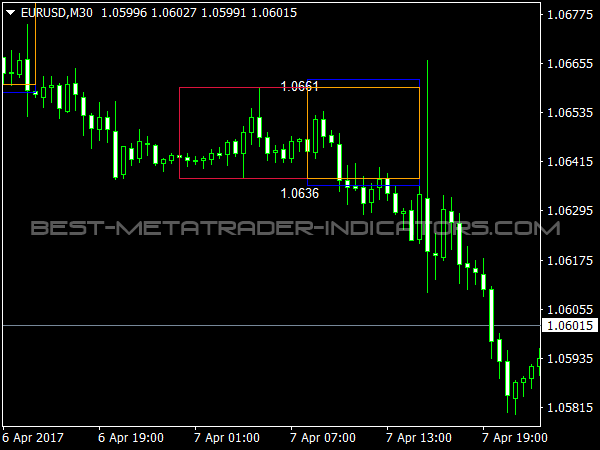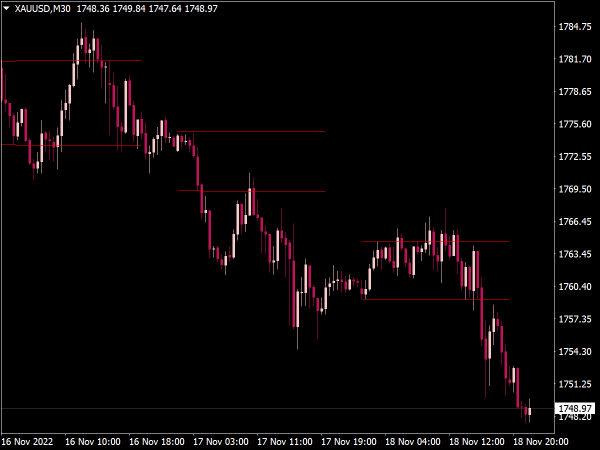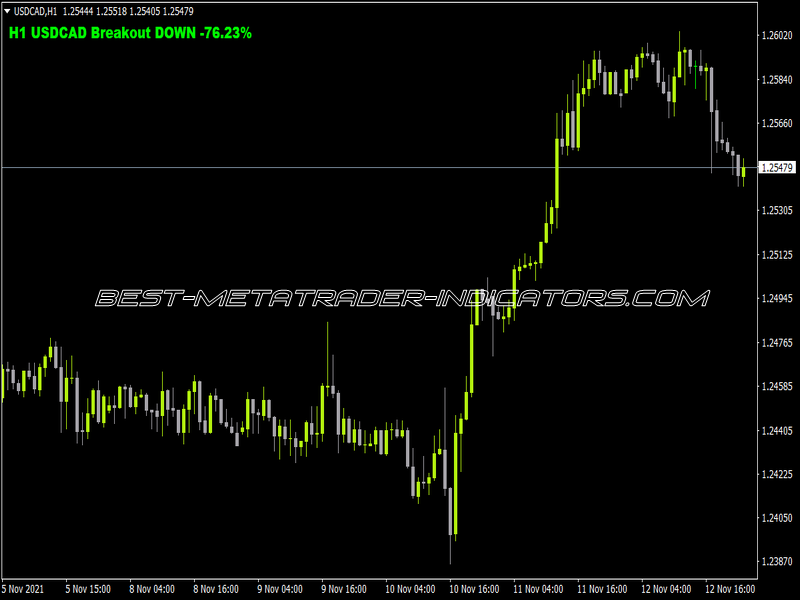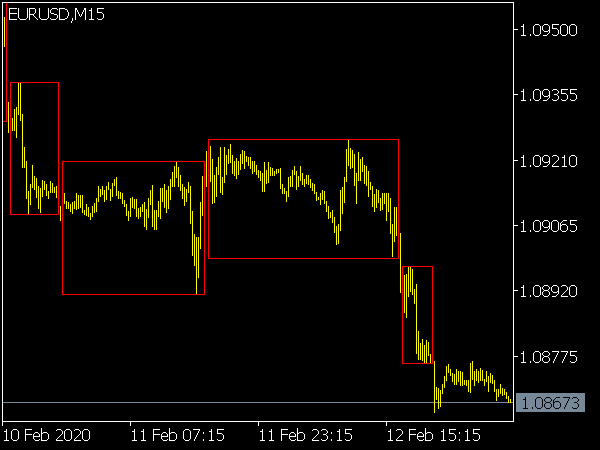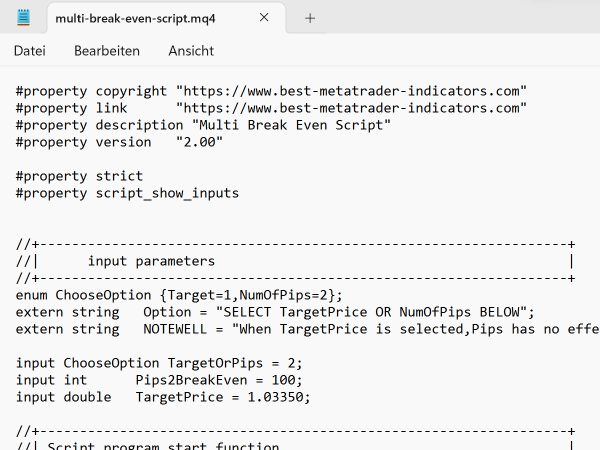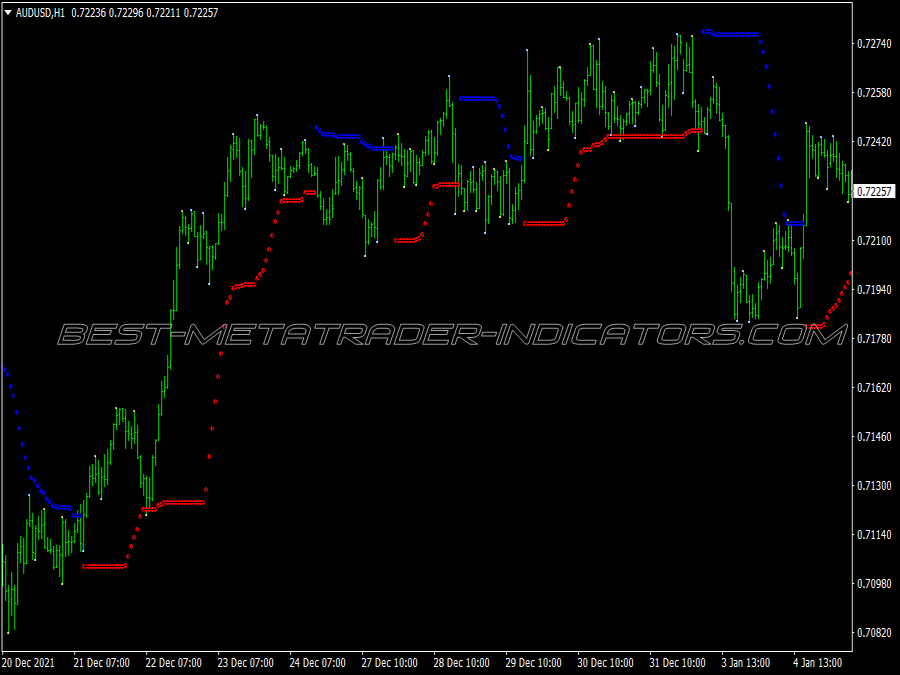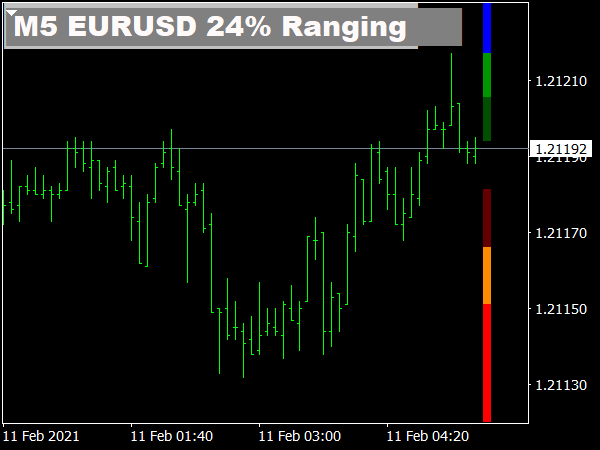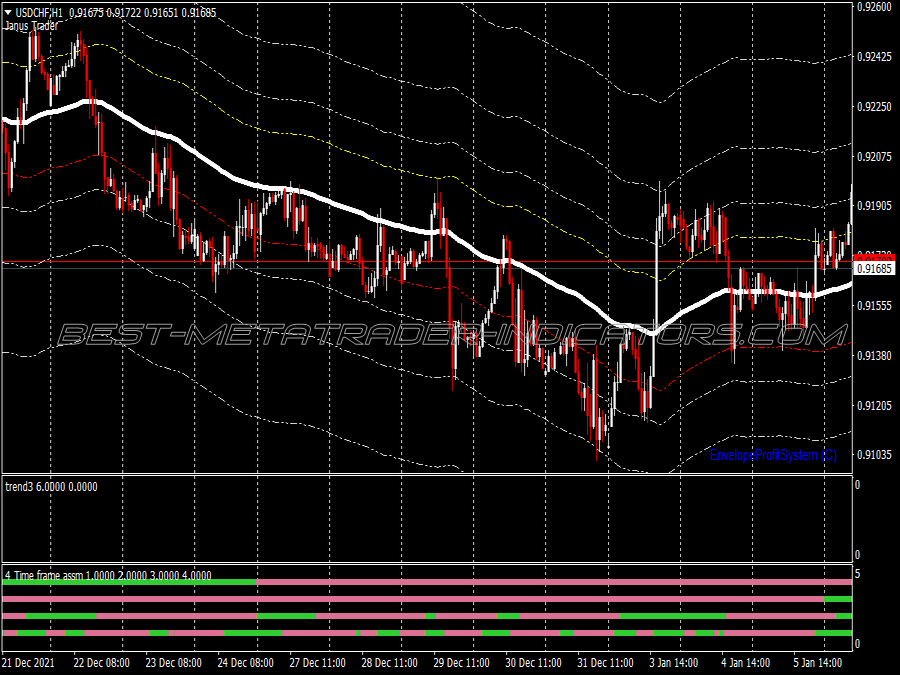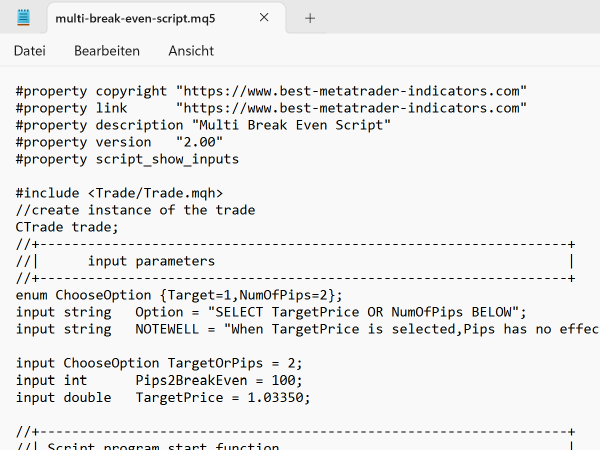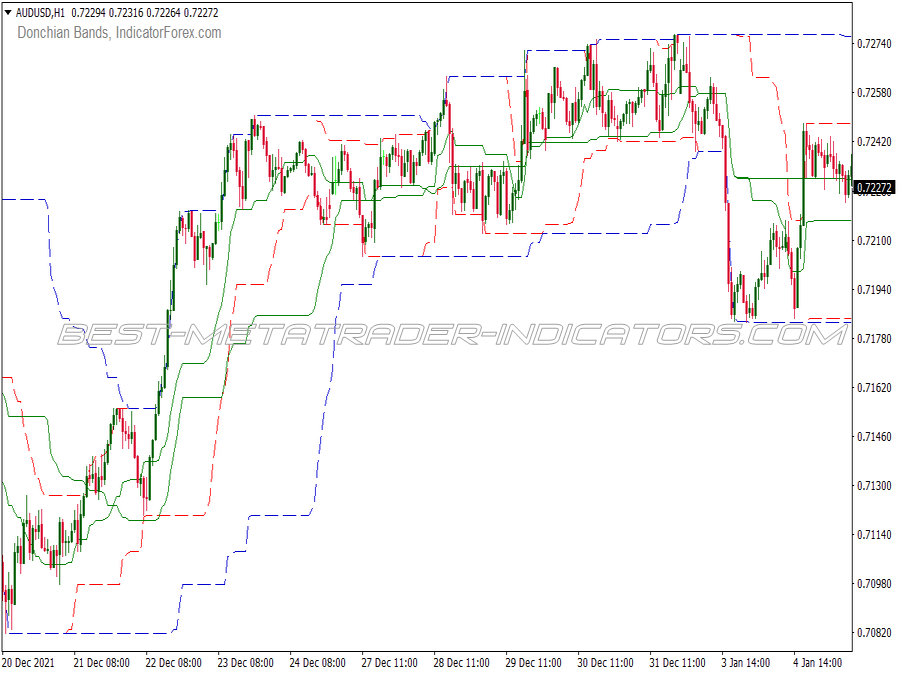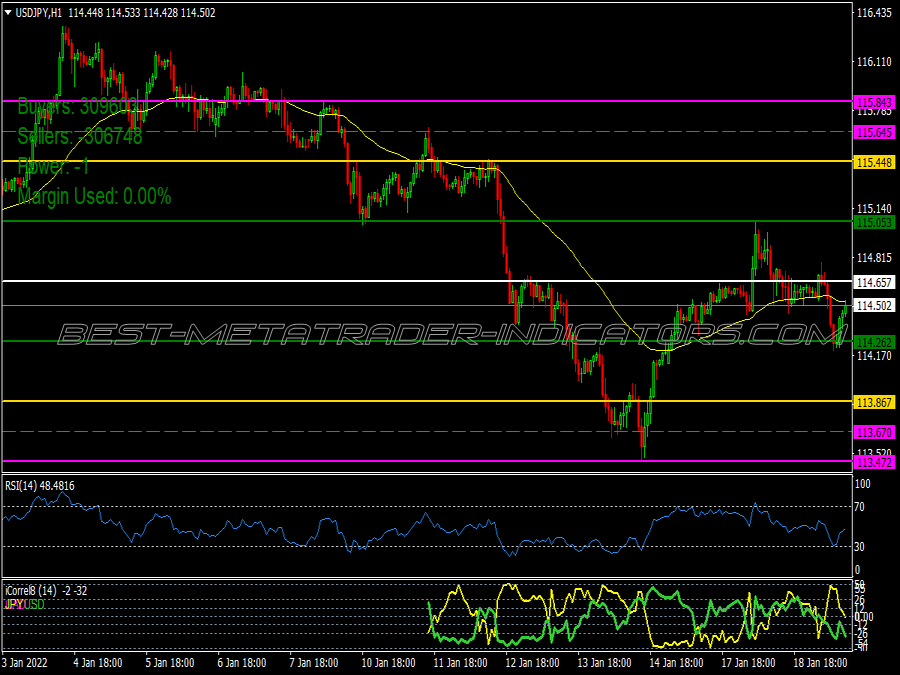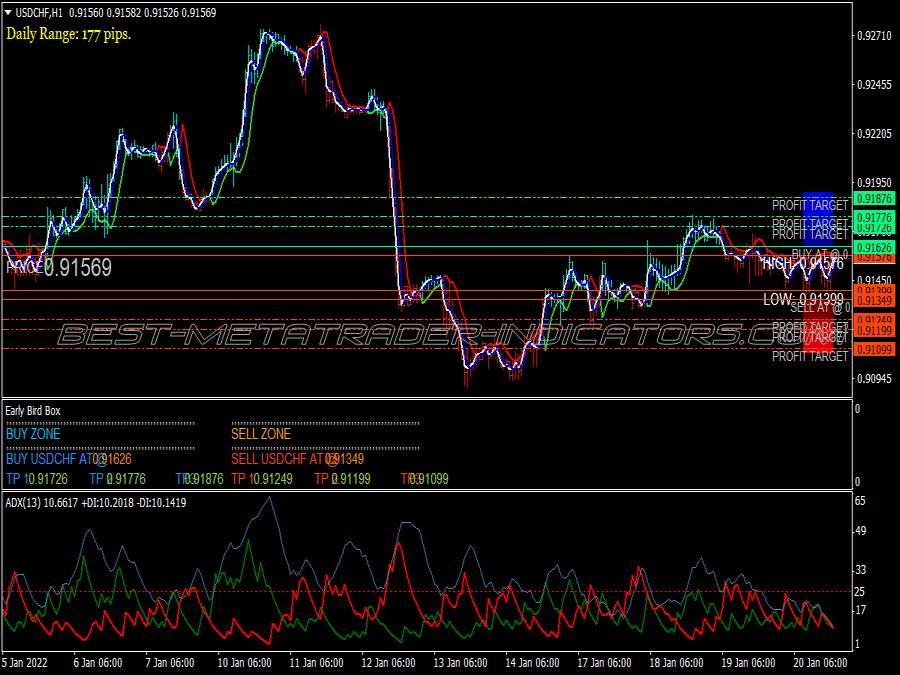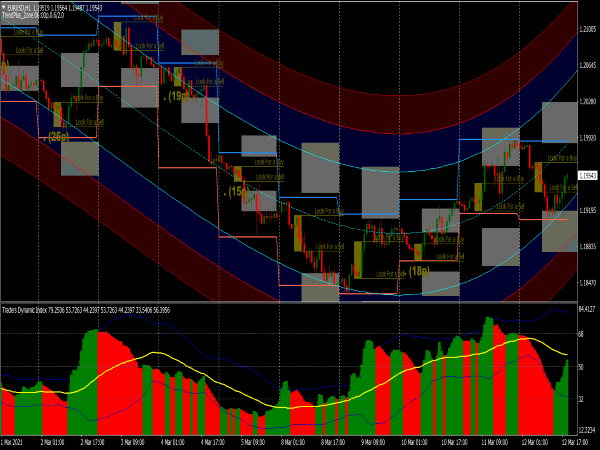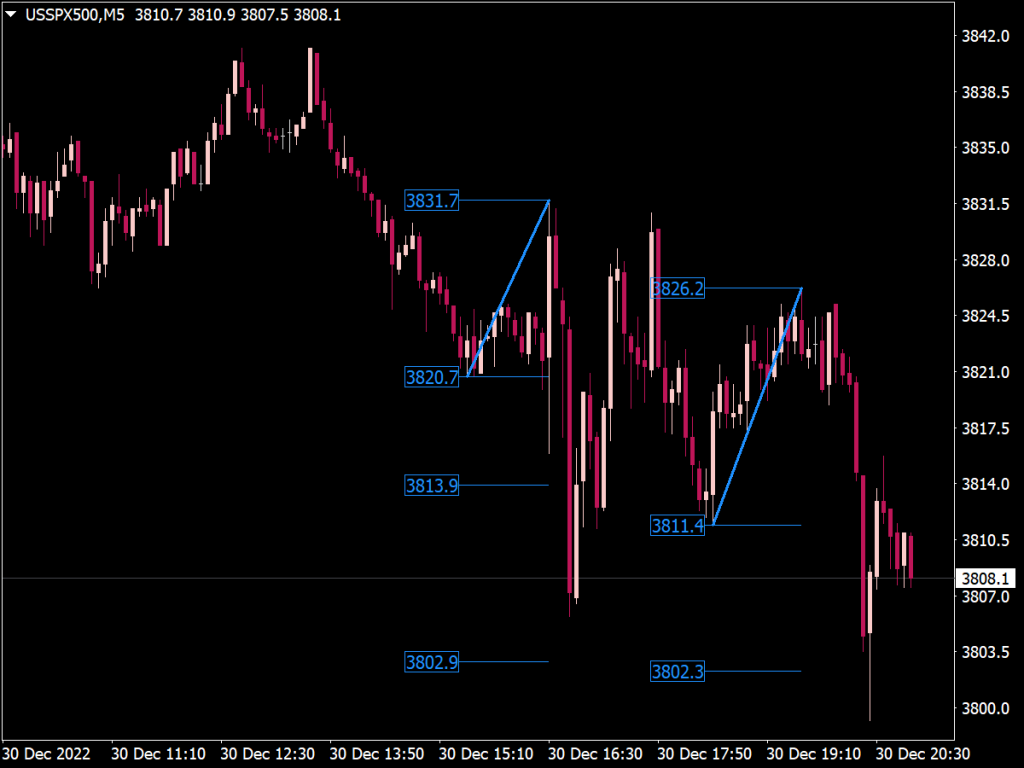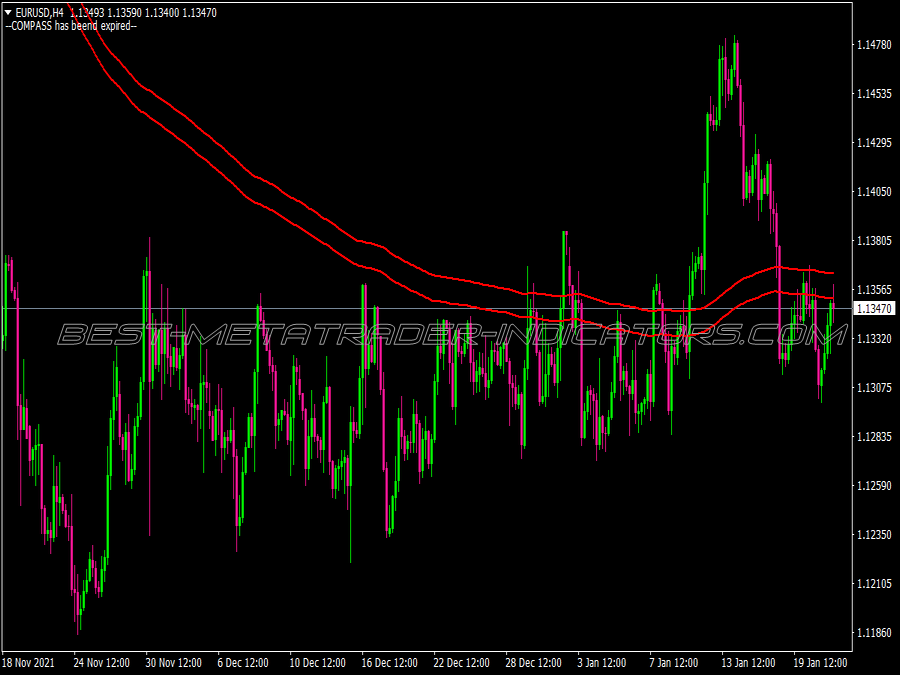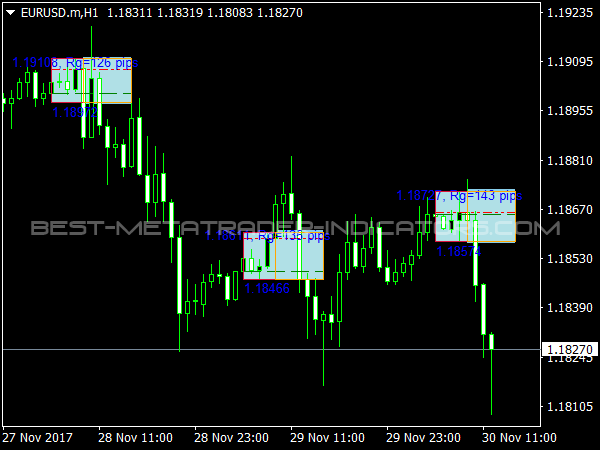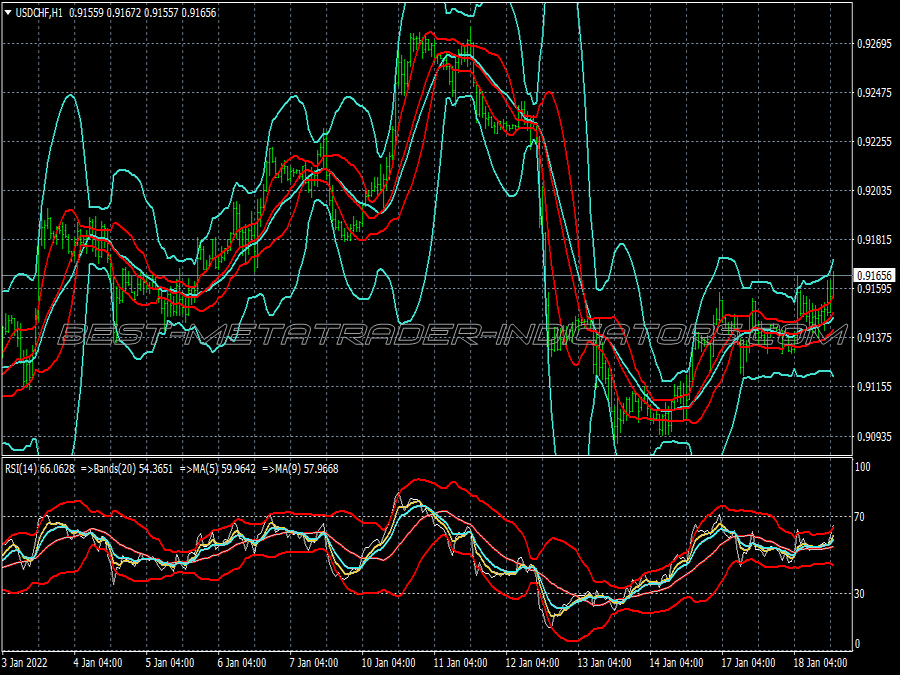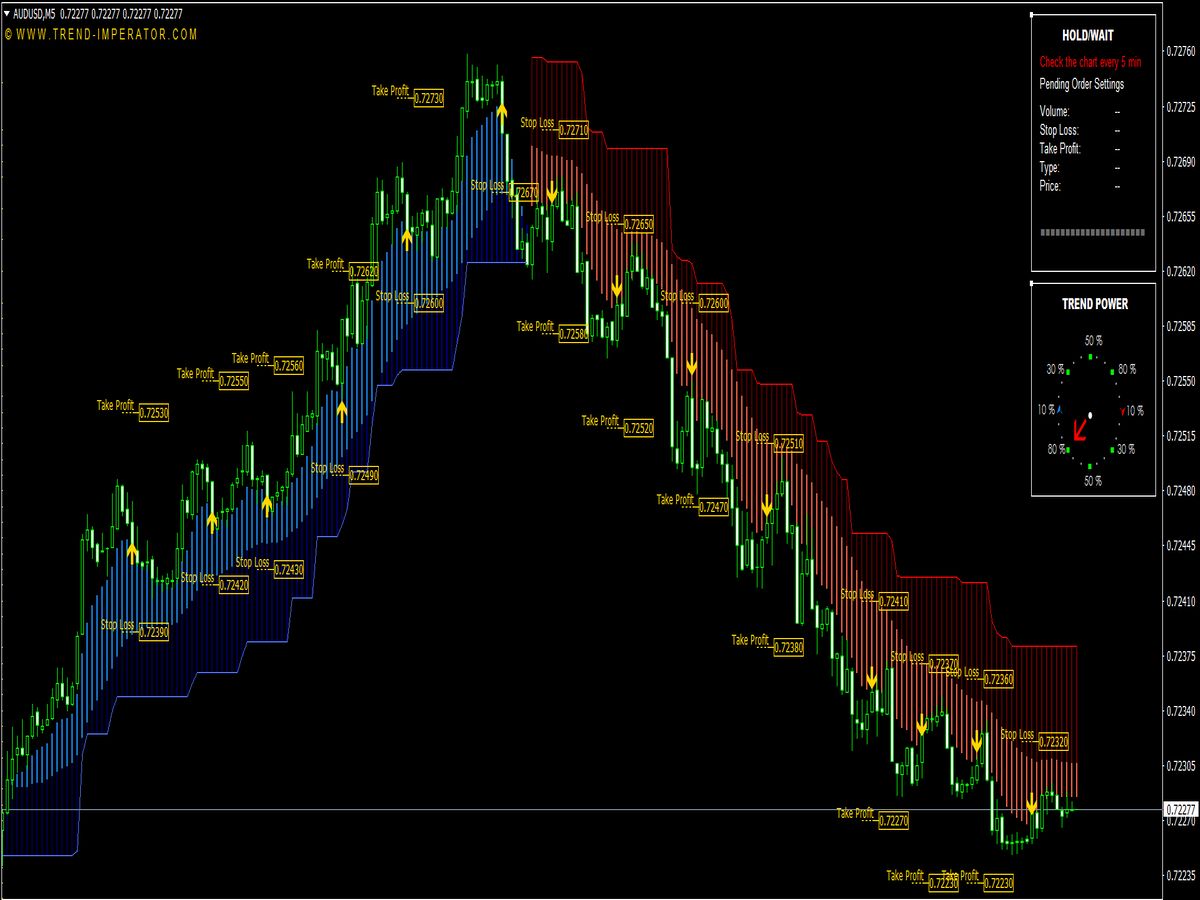Forex breakout trading strategies are similar to those in other markets, but the foreign exchange market has unique characteristics that make breakout strategies particularly effective.
The Forex market is highly liquid, volatile, and operates 24 hours a day, making it ripe for breakout opportunities. A breakout occurs when the price moves beyond a defined level of support or resistance, signaling a potential continuation or reversal of the trend.
Breakout Zones Indicator for MT4

Breakout Box Indicator for MT4
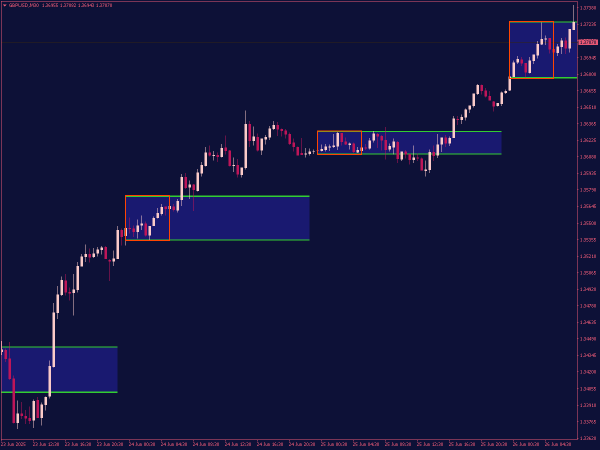
1. Range Breakout Strategy
In Forex, currency pairs often trade within a defined range during specific hours or over extended periods. A breakout above the resistance or below the support often signals the start of a new trend.
How to Trade
- Identify a Range: Use a horizontal support and resistance zone. The price should have been bouncing between these levels for some time.
- Set Entry Point: Place a buy stop order slightly above the resistance level (for a bullish breakout) or a sell stop order slightly below the support level (for a bearish breakout).
- Confirm the Breakout: Ensure the breakout is accompanied by strong momentum and increased volume. You can also use indicators like the ATR (Average True Range) to gauge whether the breakout is significant.
- Stop Loss: Place your stop loss just inside the range (below the support for a buy, above the resistance for a sell).
- Take Profit: Aim for a target equal to the width of the range (e.g., if the range is 100 pips, target 100 pips in the breakout direction).
Advantages
- Simple and effective during periods of consolidation.
- Works well with highly liquid pairs like EUR/USD, GBP/USD, etc.
Disadvantages
- Risk of false breakouts.
- Can fail during low volatility or choppy market conditions.
2. Volatility Breakout Strategy
Forex markets can experience periods of low volatility followed by significant price movements. A volatility breakout strategy looks for these moments when volatility increases, leading to a breakout.
How to Trade
- Use Volatility Indicators: Common indicators are Bollinger Bands or ATR (Average True Range). When the price is moving within a narrow range and volatility is low, a breakout can happen.
- Entry Signal: A breakout occurs when the price moves beyond the Bollinger Bands or ATR threshold, signaling a potential trend. Enter a buy position when the price breaks above the upper band or a sell position when it breaks below the lower band.
- Stop Loss: Place stop loss just inside the breakout level or use a multiple of the ATR for dynamic stop loss placement.
- Take Profit: Set your target based on the volatility or use a multiple of the ATR (e.g., 1.5 times the ATR).
Advantages
- Effective for capturing significant moves after periods of low volatility.
- Can identify major trends early.
Disadvantages
- Risk of false breakouts during sideways or range-bound markets.
- Requires patience and proper timing to avoid entering too early.
3. Trendline Breakout Strategy
In Forex, breaking a trendline is often a signal of a trend reversal or continuation. By identifying key trendlines, traders can anticipate breakouts when the price breaks through these levels.
How to Trade
- Draw Trendlines: Identify clear, upward or downward trendlines on your Forex chart.
- Entry Signal: Place a buy order above an established downward trendline or a sell order below an upward trendline.
- Confirmation: Wait for a candle close above (or below) the trendline for confirmation. Some traders prefer waiting for two or more candles to close above/below the trendline to avoid false breakouts.
- Stop Loss: Place a stop loss just below the broken trendline for a bullish breakout or above the trendline for a bearish breakout.
- Take Profit: You can use the distance between the trendline and the breakout point as a target. Alternatively, use Fibonacci levels or pivot points for your take profit levels.
Advantages
- Can be used in both trending and consolidating markets.
- Offers a clear entry and exit strategy.
Disadvantages
- Trendlines are subjective and might be drawn differently by different traders.
- May result in false breakouts, especially in choppy markets.
4. Breakout with Momentum Indicators
Combining a breakout with momentum indicators like the RSI or MACD can help confirm whether the breakout is likely to be strong and sustainable. This adds an extra layer of confirmation to reduce the chances of false breakouts.
How to Trade
- Breakout Identification: First, identify a breakout setup from support/resistance levels or trendlines.
- Momentum Confirmation: Confirm the breakout with a momentum indicator. If the RSI is above 50 for a bullish breakout (or below 50 for a bearish breakout) or the MACD crosses above/below the signal line, it adds confirmation that the breakout is likely to be sustainable.
- Entry: Once both the price breaks out and the momentum indicator confirms the move, enter the trade.
- Stop Loss: Set your stop loss just below the breakout level or use the ATR for dynamic stop loss placement.
- Take Profit: A common method is using a risk-to-reward ratio of 1:2 or 1:3 or targeting the next major support or resistance level.
Advantages
- Increases the probability of a successful breakout by using confirmation from momentum indicators.
- Suitable for both short-term and long-term trades.
Disadvantages
- Momentum indicators can be lagging and might cause late entries.
- False signals can still occur if the market reverses quickly after a breakout.
5. New York/Asian Session Breakout Strategy
The Forex market has different levels of activity in different time zones, and volatility tends to rise during specific session overlaps. This strategy capitalizes on the increased liquidity and volatility when major Forex markets (such as the New York and London sessions) overlap.
How to Trade
- Identify Consolidation in the Asian Session: During the Asian session, currency pairs like USD/JPY, AUD/USD, and EUR/JPY often experience consolidation with lower volatility.
- Breakout Setup: As the London session opens, watch for a breakout of the range established during the Asian session.
- Entry Signal: Enter when the price breaks above or below the established range.
- Stop Loss: Place the stop loss just inside the consolidation range, around 10-15 pips from the breakout point.
- Take Profit: Use a risk-to-reward ratio (e.g., 1:2) or target the next key support/resistance level.
Advantages
- Takes advantage of higher liquidity and volatility during market open.
- Works well with currency pairs that have major activity during the London or New York sessions.
Disadvantages
- Requires precision in timing and awareness of session times.
- May not work during low-volume or quiet market conditions.
6. Breakout Pullback Strategy
After a breakout occurs, the price may retrace to retest the breakout level. This offers a better entry point with reduced risk and better risk-to-reward ratios.
How to Trade
- Initial Breakout: Wait for the breakout to occur from a key support/resistance level or trendline.
- Pullback: Allow the price to pull back to the breakout level (support for a bullish breakout or resistance for a bearish breakout).
- Entry Signal: Once the price retests the breakout level and shows signs of holding (e.g., a bullish candle forms after a breakout), enter the trade in the breakout direction.
- Stop Loss: Place your stop loss slightly below (for long trades) or above (for short trades) the breakout level.
- Take Profit: Target a risk-to-reward ratio of at least 1:2 or use the next key support/resistance level for your take profit target.
Advantages
- Lower risk entries due to retesting the breakout level.
- Offers better trade management and risk-to-reward ratios.
Disadvantages
- Requires patience as not all breakouts will pull back.
- Risk of missing a move if the pullback doesn’t materialize.
Key Considerations for Breakout Trading
- Risk Management: Forex breakouts can be volatile, so always use a stop-loss to limit your potential losses. A good rule of thumb is risking no more than 1-2% of your trading capital per trade.
- Time of Day: Breakouts are often more reliable during times of increased volatility, such as during the London/New York overlap or key economic news releases.
- Market Sentiment: Monitor economic news and events as they can trigger significant breakouts in Forex pairs.
- False Breakouts: False breakouts can lead to quick reversals. Confirm your breakouts with volume, momentum indicators, and other analysis techniques to minimize this risk.
